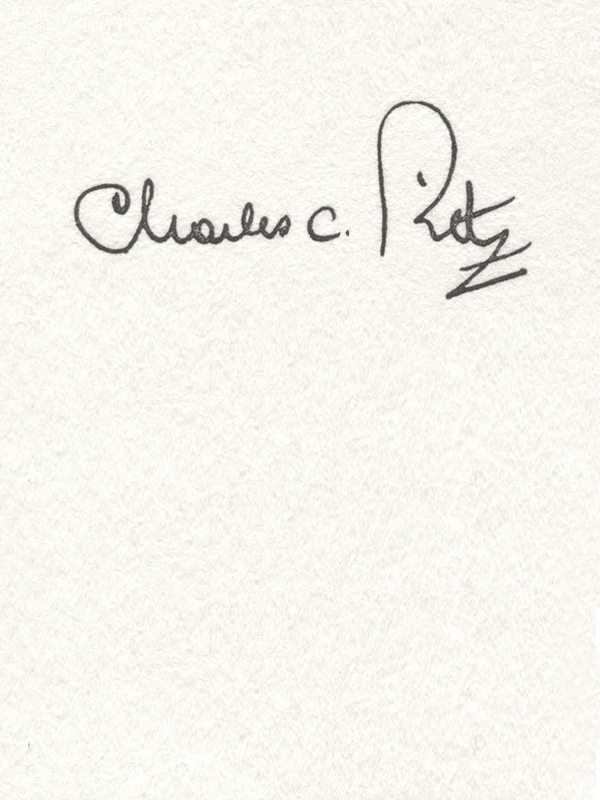
Casting competition
Casting competition

The “casting” or sport of “fly and weight” casting is to fishing what shooting is to hunting. It is a full-fledged sport recognized by the International Olympic Committee, but completely unknown and forgotten in France.
In August 1968, during the world casting championships which took place that year in Lenzerheide (Switzerland), I finished fourth in the distance fly casting event, with an average of my three best casts for 49,74 m. The worst place, it seems, but at the age of 19, I was still very happy to have placed my best cast at a little more than 51 m. It is true that for two years already, I had been trained every Sunday morning by Pierre Creusevaut, who for more than twenty years had been the world professional fly casting champion and by Charles Ritz. The winner of the event was Walter Kummerow (Germany), with an average of almost 54 m for his three best casts. At that time, the fly events in distance as well as in accuracy were held on the water, from a small platform raised 60 cm above the lake level. And if during the back cast, the fly touched the water, a referee blew a whistle and the front cast did not count…

In Oslo in 1967, at my first world championship, all the competitors encouraged me and signed my results book.
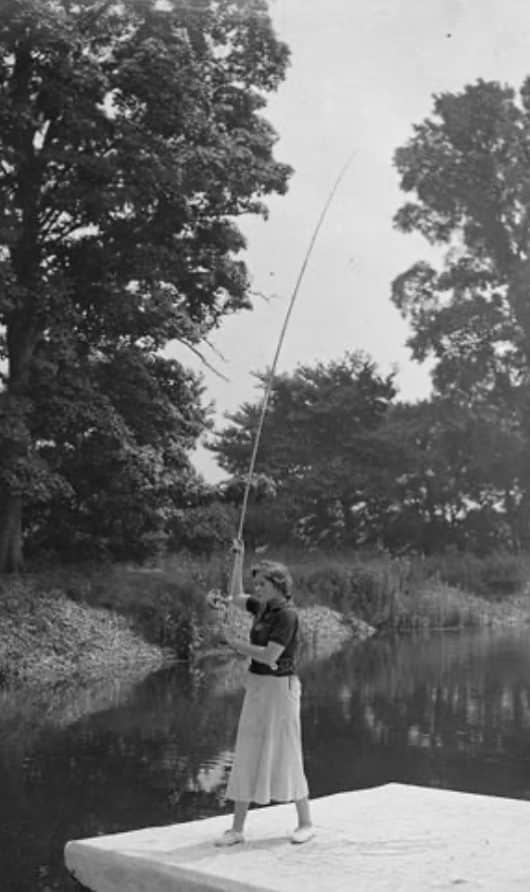
In the United States, fly casting was already practiced by women in the early 20th century.
If not for the power of the rods (made of split bamboo at the time), we were almost in fishing conditions. Today the world record for “trout” fly distance (with a one-handed fly rod) is held since 2018 by a caster from Wales, with a cast of 80.59 m. Beyond the fact that today we use “ultra-light” rods (for their power) made of carbon fiber or boron and ultra-dense plastic lines, such a difference in distance, close to thirty meters in half a century, is also explained by the fact that since the 80s, international “fly” competitions are no longer held on water, but on the grass of a sports field. Not only are backward touches, difficult to see on grass, no longer sanctioned, but many competition casters put their fly line behind them and wait for a favourable wind to cast as high as possible forward, while resting, so that the wind favours the cast. This has little to do with fishing conditions for trout or salmon…
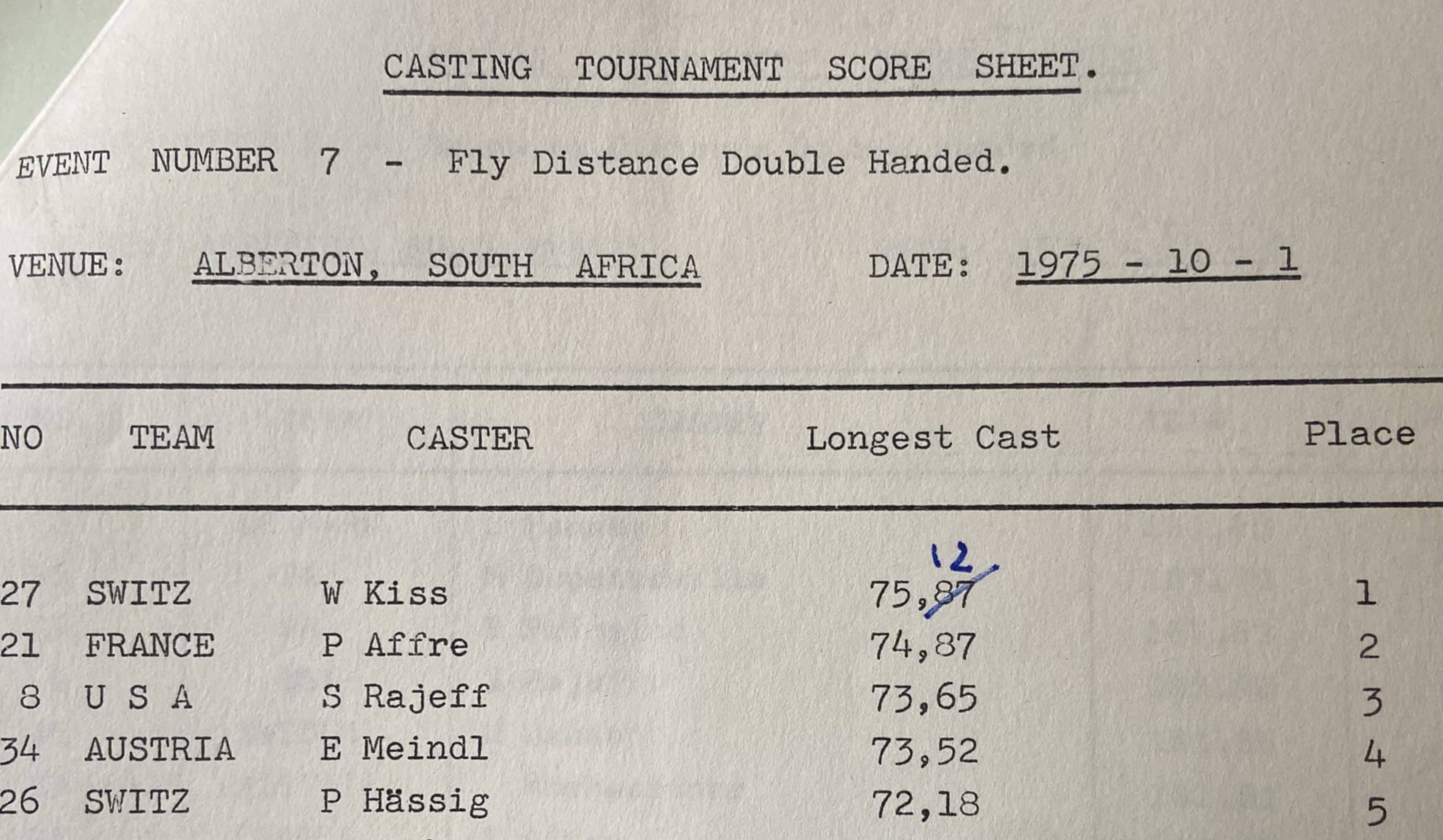
For 25 "small" centimeters in 1974, I missed the best gold medal in the distance casting of the salmon fly at the World Championships in Johannesburg.
A good distance thrower will quickly become a good fisherman.

Since the end of the 19th century in the United States, fly-fishing competitions were held on the water, from a 50cm high platform. The gengtlemen in the boat were the judges who measured the length of the cast with precision.
Indeed, casting a fly with a one-handed rod, at more than 80 meters, obviously does not allow to hook a trout at this distance. It is true that there is as much difference between a rod and a line used for competition and a commercial fishing rod, as between a Formula I car and the car of everyone. However, it is precisely by studying the action and the constraints that competition casters put on their equipment that engineers and technicians from Pezon and Michel, Mitchell, Hardy or today Daiwa or Browning, are constantly improving the performance of the rod, line or reel used by everyone.
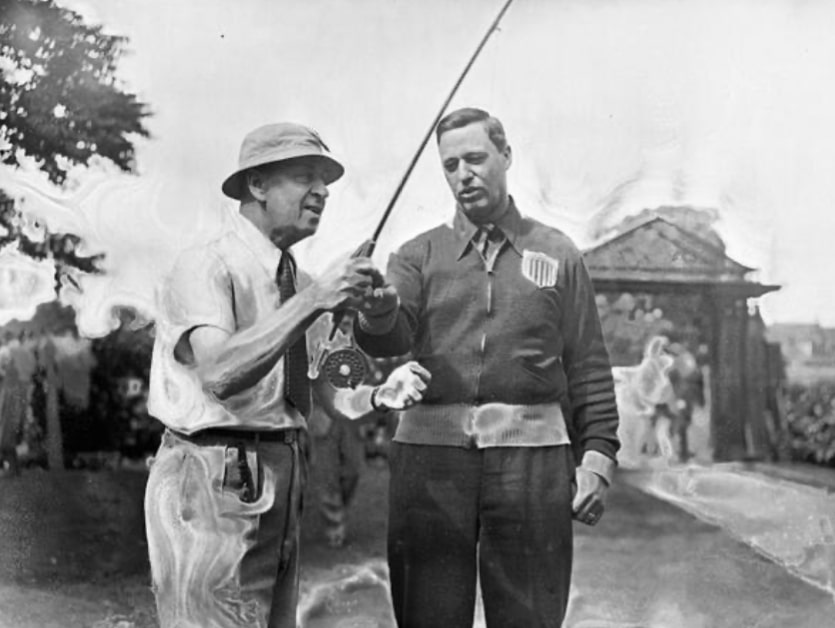
On the right side of the picture, Marvin Hedge, American world champion in one-handed "fly distance", with a 50.5m throw in 1937, gives precious advice to an English competitor.
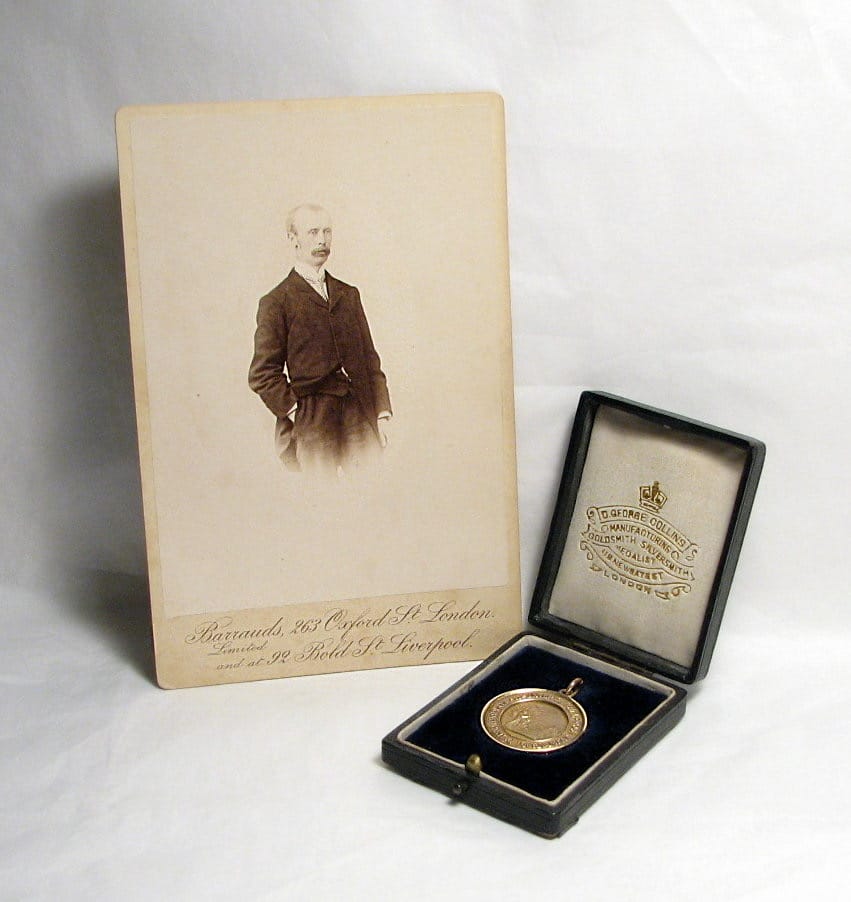
At the end of the 19th century, Michael Holroyd Smith, associate of Graham Bell and Thomas Edison, was a passionate fly fisherman and a talented competitor.

In the United States, from a platform, competitors throw flies or precision weights into 76cm diameter hoops placed on the water at different distances.
The sport of casting is used to improve commercial fishing tackle, just as motor sport is used to improve the performance of production cars. And just as some rally car events try to approximate road driving conditions, there are “fishing” events in the sport of casting for which competitors must use commercially available, off-the-shelf tackle. In Great Britain during the famous “Game Fair”, every year a manufacturer is even appointed to provide identical equipment, which will be used by the competitors who claim the title of British Isles champion. The former Prince of Wales (now King Charles III) as well as many peers of the kingdom, usually honor with their presence or even participate in this event.
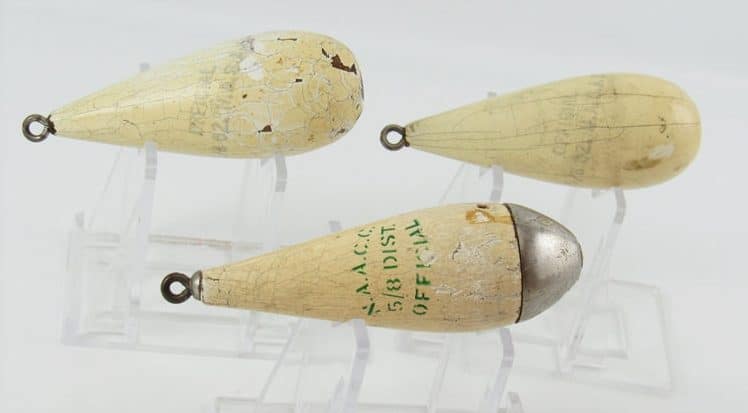
Throwing weights: on top, two plastic precision weights. Below, a plastic and metal "distance" shot, inscribed 5/8 of an ounce, sot 17,72g.
In France, it was during the interwar period that casting had its heyday, leading to extremely popular competitions, the most famous of which, which brought together several hundred participants every year in Paris, was the Violet-Byrrh Cup, the winner of which received a solid silver and vermeil challenge, chased by Van Cleef and Arpels, for one year.
Casting is most common in the United States, Japan and Scandinavia.

Joan Salvato Wulff, épouse de Lee Joan Salvato Wulff, wife of Lee Wulff, the greatest fly fisherman of all time, was the American all-around fly casting champion., le plus grand pêcheur à la mouche de tous les temps, était la championne américaine, toutes catégories, du "lancer mouche".
If it is not practiced in our country anymore, it is not the case in the Anglo-Saxon or Scandinavian countries, or even in the former Eastern Bloc countries or in Japan. In these countries, first and foremost the United States, several thousand casters regularly practice this sport, which includes ten accuracy or distance events, for both fly casting and plugs from 7.5 to 30 g. The accuracy events consist of casting either an artificial fly with the hook tip cut off, or a plastic weight representing a lure, into targets 76 cm in diameter, placed on the grass or water at different distances from the caster’s location. These trays or hoops are obviously meant to represent the stalking positions of carnivorous or gobbling fish. In the distance-weight events, the competitors must catapult weights of 7.5, 18 or 30 g as far as possible from a starting base.
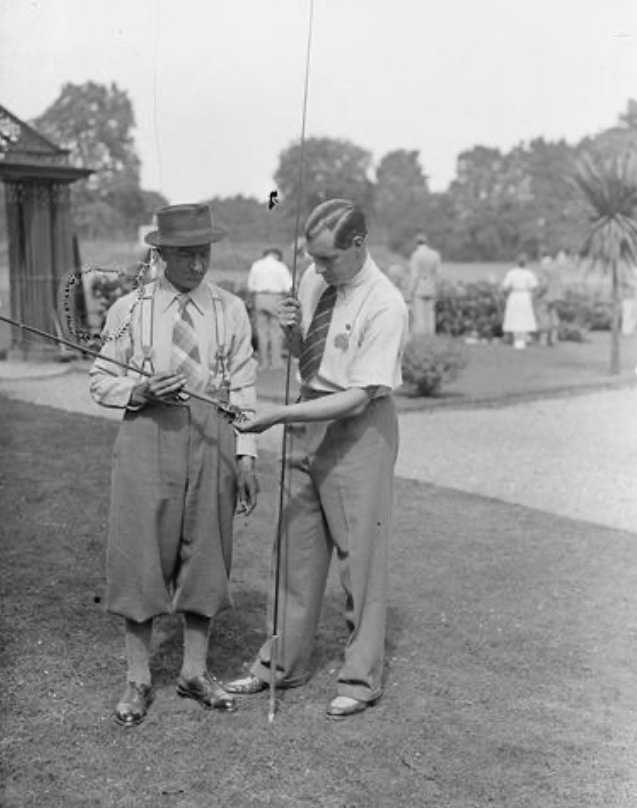
On the left, the Belgian fly casting champion Albert Godard, a great friend of Charles Ritz, examines the equipment of an Irish competitor.
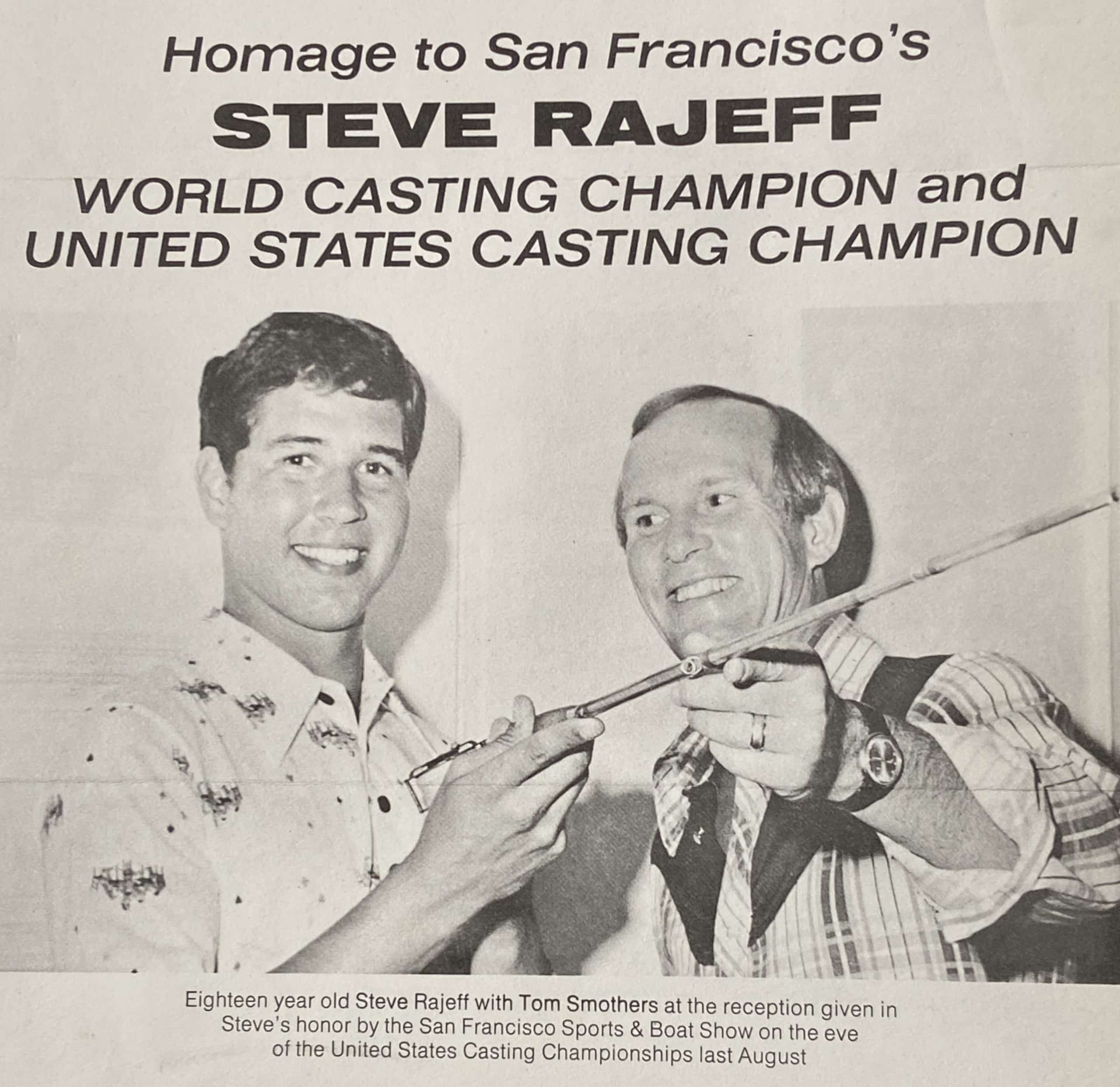
Steve Rajeff, of the San Francisco Casting Club, has been the all-around world casting champion since 1976.
But casting is not fishing, you may say, and just as a champion clay pigeon or target shooter will not necessarily be a good hunter, a fly caster will not necessarily be a trout catcher. Yet I don’t know any good caster who was not or is not a great fisherman, in France or abroad. And there is no doubt that after having tried a little competition, one is more comfortable on the banks of a river crowded to place his fly or his spoon flush with the trout or carnivorous posts.
A little history.
In 1910, during the French international championships, Mr. Lucien Perruche, a famous fishing author of the time, won the “trout” fly distance event with a one-handed rod, with a cast of 28 meters. Twenty-eight meters only, one would be tempted to say, yes, but with commercial fishing equipment, a split bamboo rod from Hardy, and a greased natural silk fly line. Many of today’s trout fishermen, with carbon rods and plastic lines, would be unable to do the same.
Viscount Henry de France, inventor of the fixed reel, and first President of the Casting Club de France, founded in 1909, was for many years international champion in casting, both in accuracy and distance. Here is what he wrote in 1927: “In these conditions, nothing prevents our popular associations of fishermen, to give them also competitions of casting. They will find many advantages, the casting events being very pretty to see and very easy to follow and understand, will attract a large audience”.



